Ampalaya Garden Ideas: Creative Ways to Grow Bitter Melon
Looking to add a unique touch to your garden? Ampalaya, also known as bitter gourd, is a versatile plant that brings both beauty and function to your outdoor space. With its lush green vines and distinct fruit, it’s sure to stand out among your other garden varieties.

Why grow ampalaya in your garden? It’s not just about looks; ampalaya is also packed with nutrients and can be used in many delicious recipes. Whether you’re a new gardener or have a seasoned green thumb, incorporating this plant can be a rewarding experience.
1) Vertical Trellis for Bitter Melon
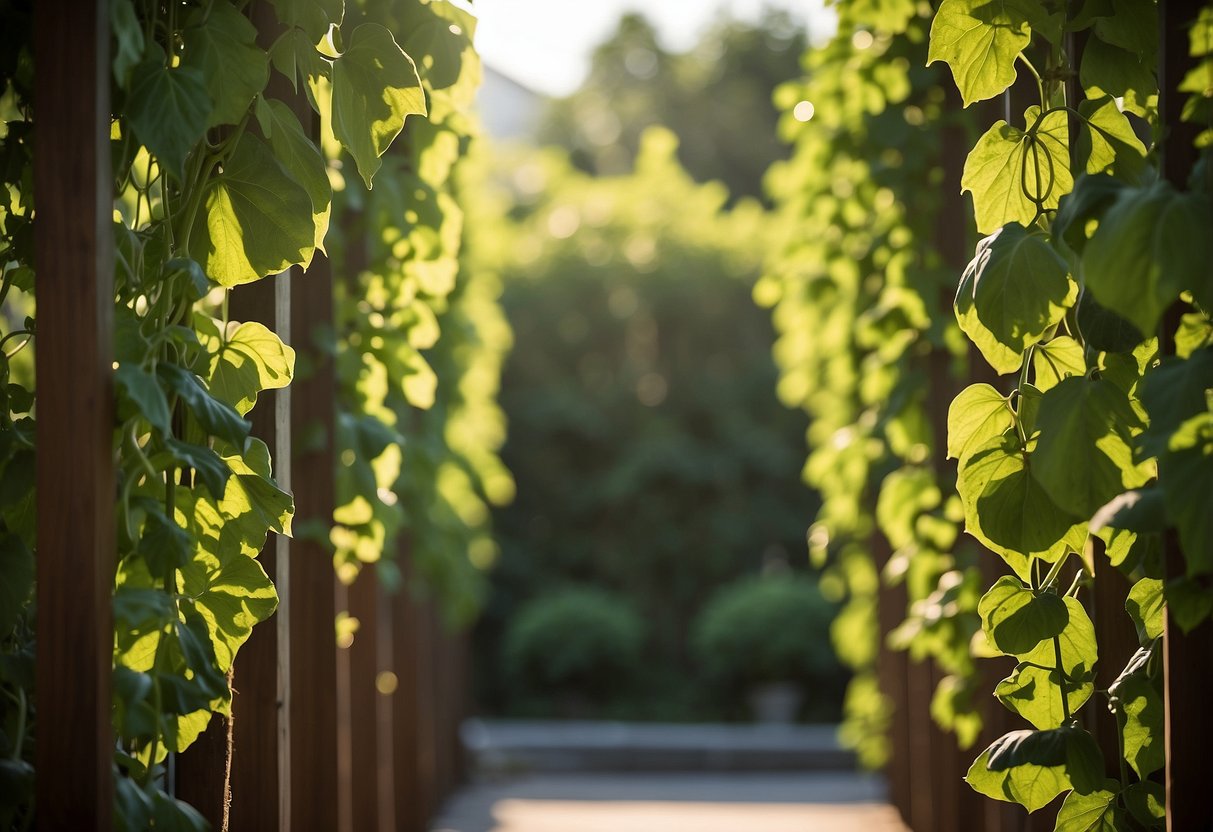
Growing bitter melon on a vertical trellis can save space in your garden. Choose a spot that gets at least six hours of sunlight daily.
Plant the seeds about half an inch deep near your chosen trellis. Space them three feet apart for better growth.
Using a sturdy structure like a wooden trellis or metal frame will support the heavy fruit. This helps keep the melons off the ground and promotes healthy air circulation.
2) DIY Bamboo A-Frame Trellis

Creating a DIY bamboo A-frame trellis for your ampalaya plants is both practical and fun.
Start by gathering sturdy bamboo canes. You’ll need six to eight long sticks to form the A-frame structure.
Position the bamboo poles in pairs, forming an “A” shape. Lash them together at the top using strong garden twine.
Ensure the base of the trellis is stable and secure it into the ground. This structure will support your climbing ampalaya plants effectively.
For more ideas, check out DIY Bamboo Trellis Plans.
3) Repurposed Wire Fencing Trellis
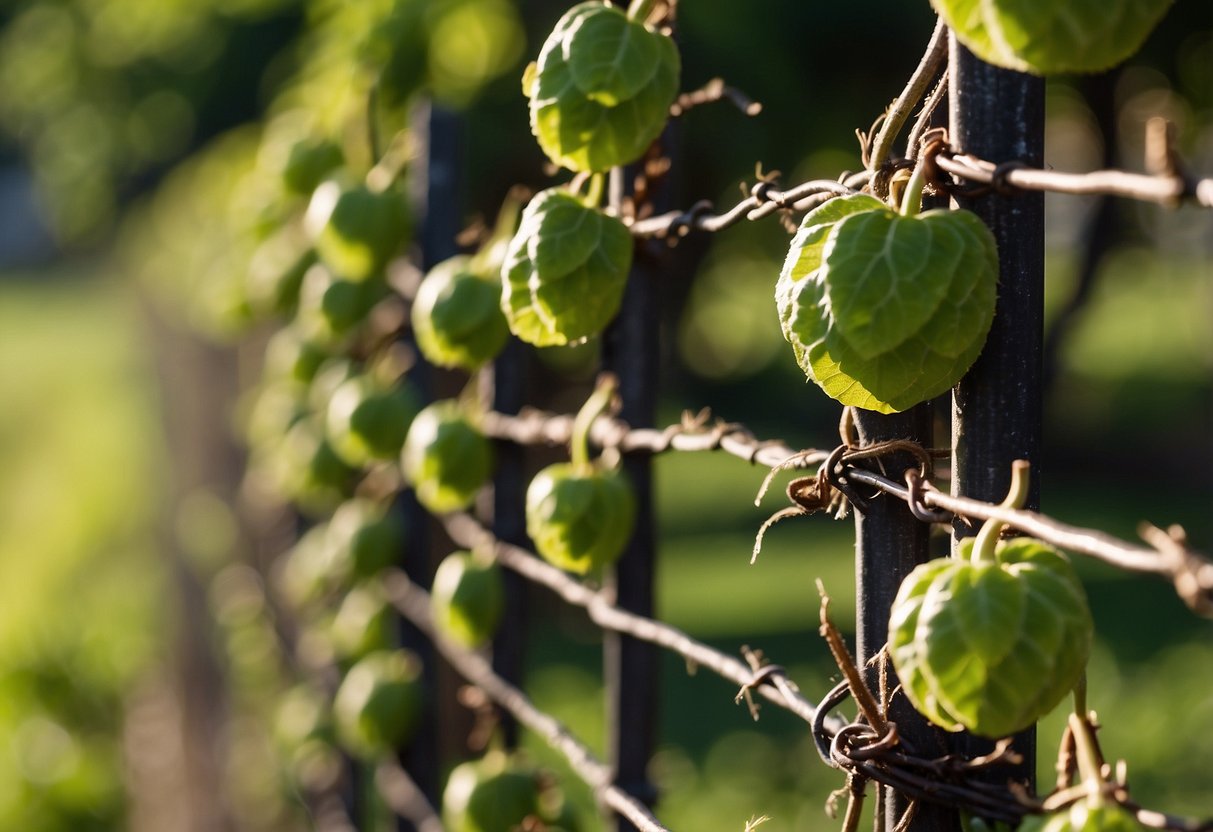
Using repurposed wire fencing as a trellis for your ampalaya plants is both eco-friendly and practical. It’s easy to set up and provides strong support for the vines.
You can take an old wire fence and secure it to wooden stakes or a metal frame. This creates a sturdy structure for the ampalaya to climb.
This method is budget-friendly since you’re reusing materials you might already have. It also adds a rustic charm to your garden, making it both functional and aesthetically pleasing. For more ideas, check out these DIY garden trellis plans.
4) Ample Sunshine Spot

Ampalaya plants need plenty of sunlight. Aim for a spot that gets at least 6 hours of sunlight daily. This helps the plants make their food and grow well.
Without enough sun, these plants might grow poorly. So, choose a sunny location in your garden. Make sure there are no tall plants or structures blocking the light.
By ensuring your ampalaya gets ample sunshine, you’ll encourage healthy growth and a bountiful harvest.
5) Raised Beds for Improved Drainage

Using raised beds can help improve drainage for your ampalaya (bitter melon) garden. Raised beds lift the soil above ground level, reducing the risk of waterlogging. This helps prevent root rot and other water-related issues.
To further enhance drainage, mix materials like compost and vermiculite into the soil. Compost enriches the soil, while vermiculite keeps it well-drained and loose. Raised beds can be made from wood, brick, or other durable materials. They also make it easier to manage weeds and pests.
6) Companion Planting with Corn

Planting corn with ampalaya can be a smart choice. Corn provides a natural trellis for the climbing vines of ampalaya.
You can also include plants like borage and lettuce. Borage repels pests and attracts bees, while lettuce benefits from the moisture and shade.
Another great companion is squash. Squash helps regulate soil moisture and control weeds, making your garden healthier and more productive.
7) Mulching with Organic Materials
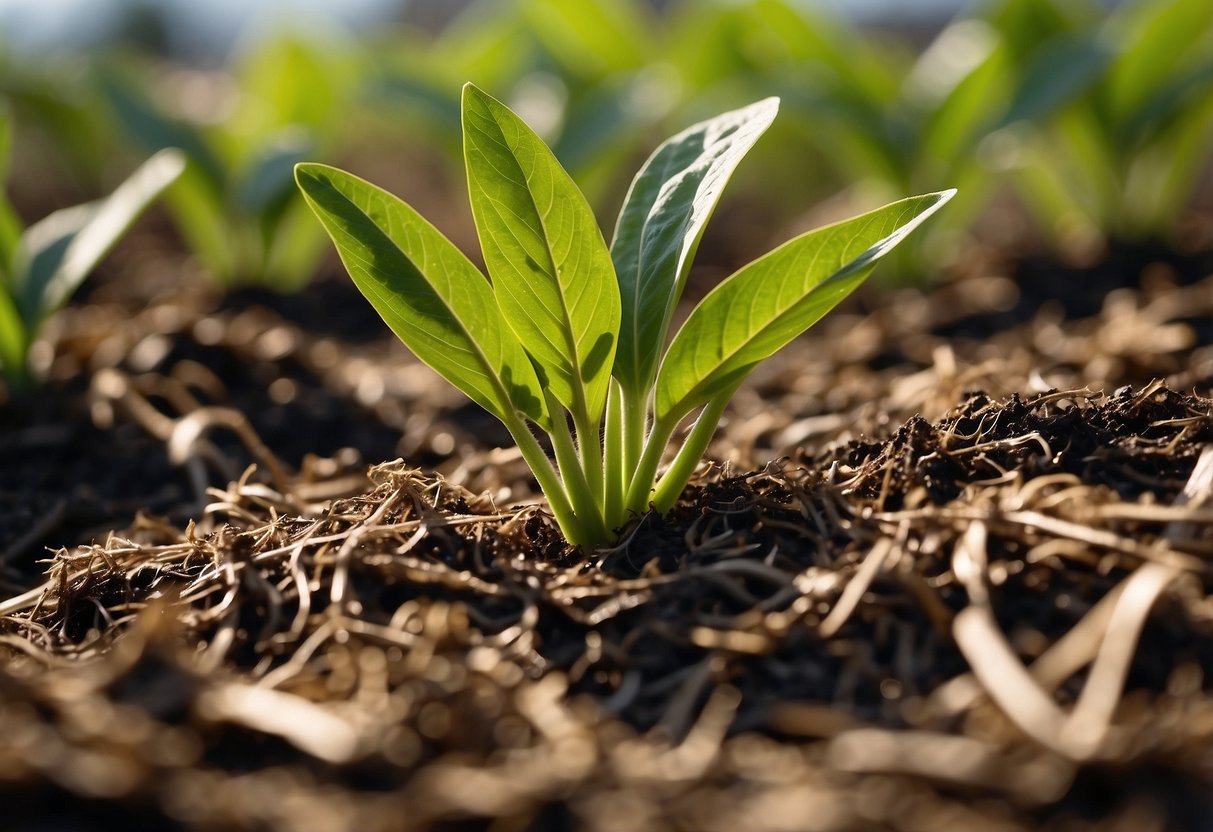
Mulching helps keep your ampalaya garden healthy. Using organic materials for mulch can improve soil quality.
Compost is a great option. It helps build soil tilth and suppress weeds. You can add a layer of 1-4 inches to your garden.
Straw mulch is another good choice. It keeps soil cool and retains moisture. Spread it about 2-3 inches deep.
Seed hulls like buckwheat or rice hulls also work well. They moderate soil temperature and add organic matter.
8) Organic Fertilizers for Rich Soil
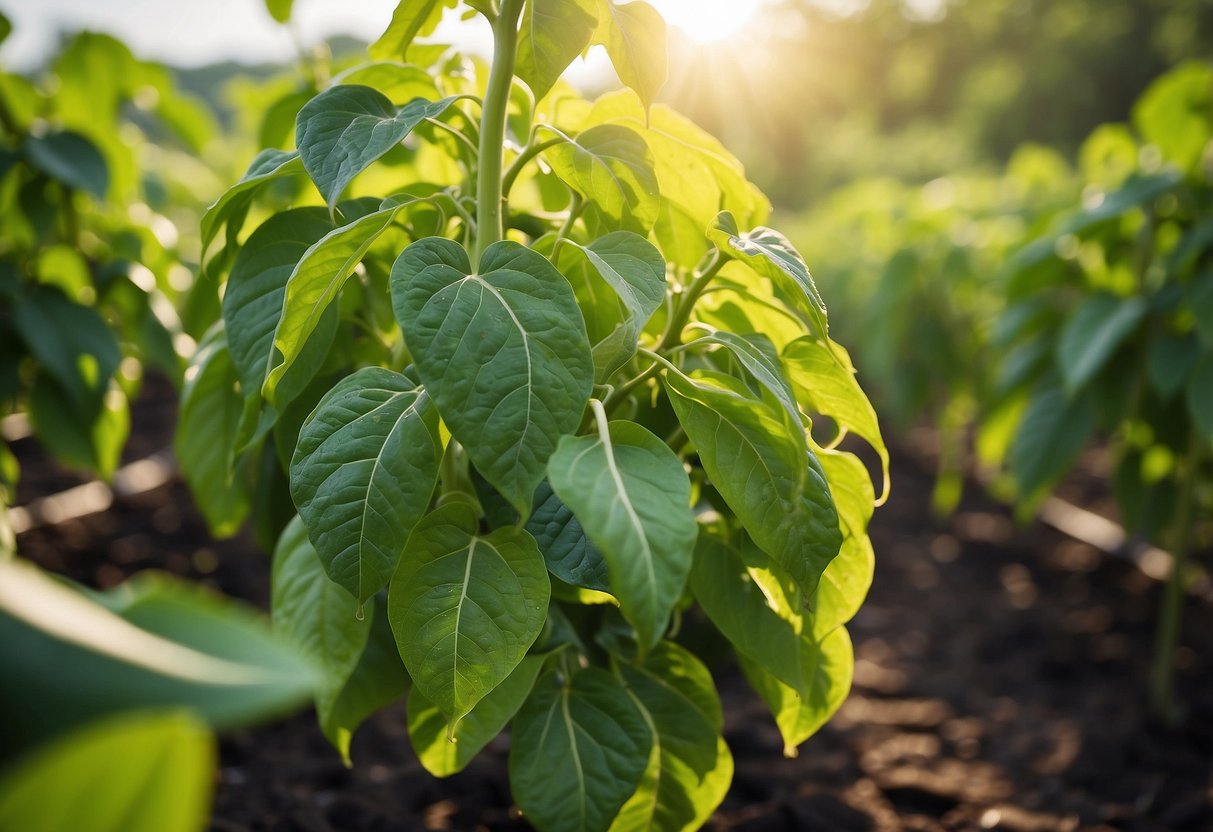
Using organic fertilizers can make your ampalaya garden thrive. Cow manure is a great option. It’s rich in nutrients like nitrogen, phosphorus, and potassium.
Another good choice is compost. Mix it into the soil to improve its texture and nutrient content. You can also use aged manure. It helps your plants grow strong without adding chemicals to your garden.
9) Drip Irrigation System
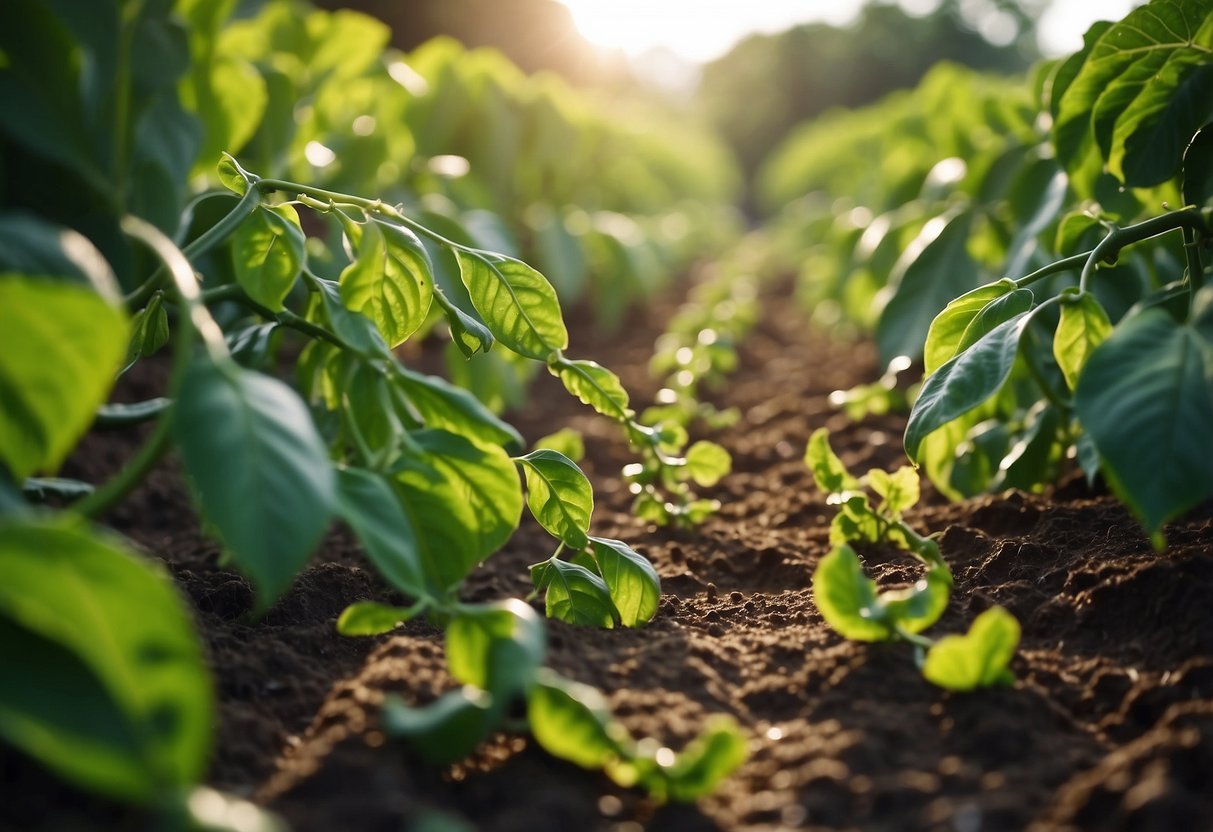
A drip irrigation system is a great way to keep your ampalaya garden healthy and hydrated. This system delivers water directly to the roots, ensuring efficient use of water.
You can set up a DIY drip irrigation system with items like a garden hose or even a simple milk jug drip watering system. This system is cost-effective and easy to assemble.
Having this setup will save you time and effort, letting you enjoy more of your gardening experience.
10) Pest Control with Neem Oil
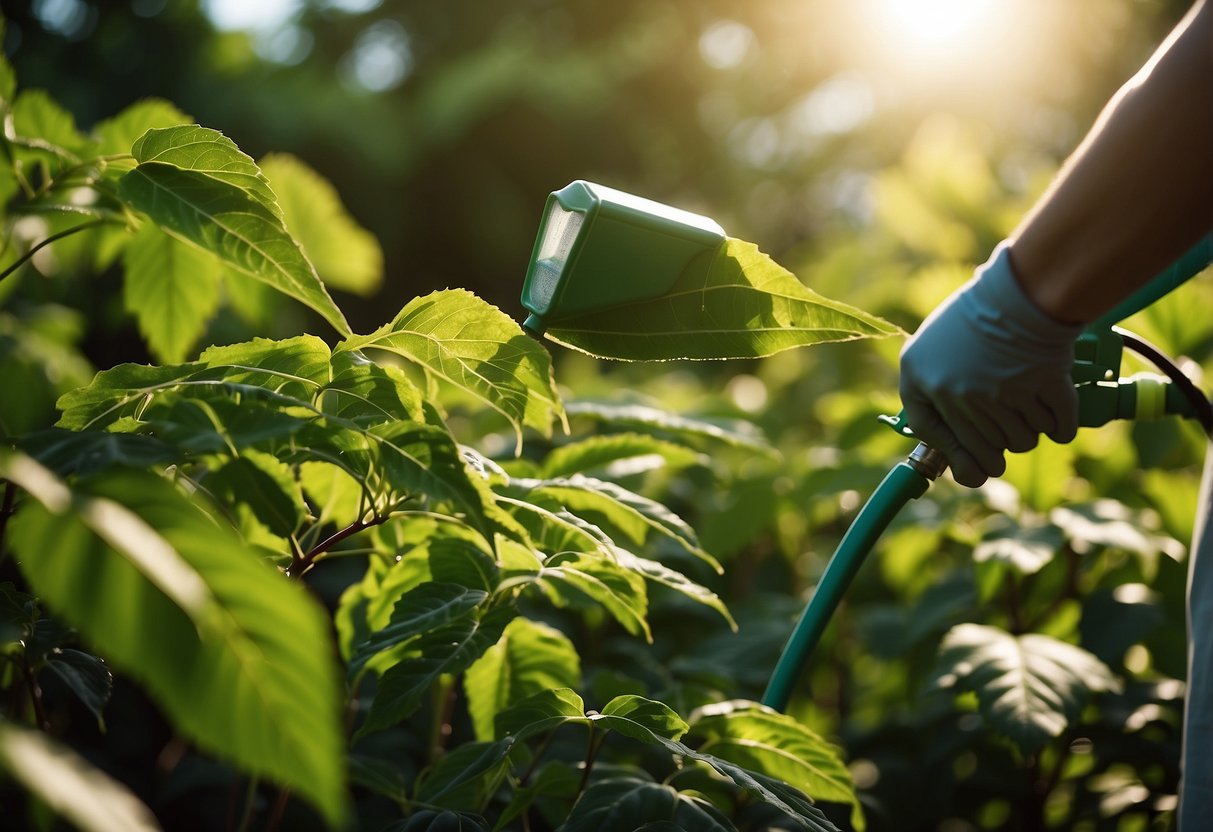
Neem oil is a fantastic organic way to manage pests in your ampalaya garden. It helps repel and disrupt the life cycle of many insects.
To use neem oil, mix 1 teaspoon of neem oil concentrate with 1 liter of warm water and 1 teaspoon of mild liquid soap.
Spray your plants thoroughly, especially on the undersides of leaves. Make sure to apply the spray in the evening or on cloudy days to avoid leaf burn. Regular application can keep your ampalaya plants healthy and pest-free. For more tips, visit Epic Gardening on Neem Oil.
Benefits of Growing Ampalaya
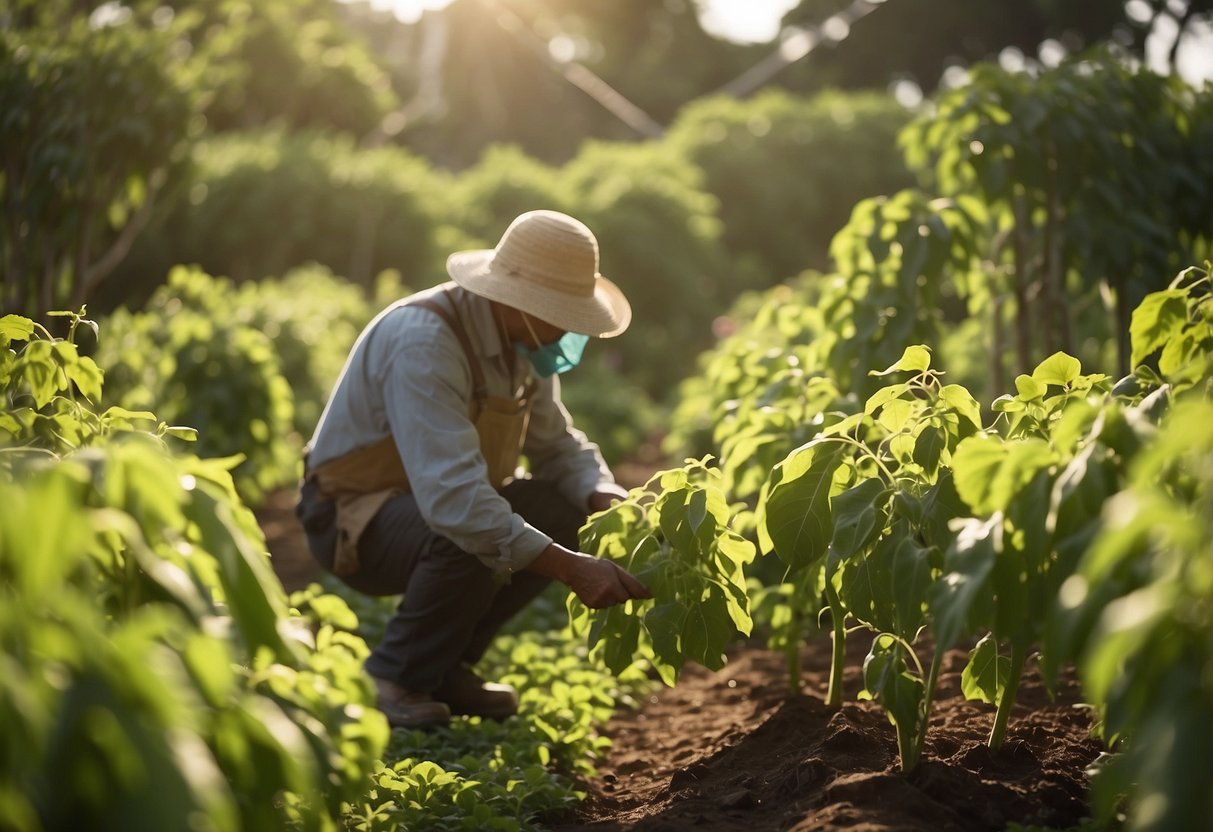
Growing ampalaya, also known as bitter gourd, offers many advantages. You will find benefits ranging from its high nutritional value to numerous health benefits.
Nutritional Value
Ampalaya is well-known for its rich nutritional profile. It is a great source of vitamins and minerals, including vitamin C, which helps support your immune system, and vitamin A, which is crucial for eye health. It also contains essential minerals like iron and potassium.
Ampalaya is low in calories, making it suitable for those looking to maintain a healthy weight. Here’s a quick breakdown of what 100 grams of raw ampalaya includes:
| Nutrient | Amount |
|---|---|
| Calories | 17 kcal |
| Carbohydrates | 4 g |
| Fiber | 2 g |
| Vitamin C | 84 mg |
| Iron | 0.4 mg |
Including ampalaya in your diet can enhance your nutrient intake without adding excessive calories.
Health Benefits
By growing ampalaya, you can tap into its various health benefits. One major advantage is its potential to help regulate blood sugar levels. This gourd contains compounds such as charantin and polypeptide-p which may aid in lowering blood sugar levels, making it a good choice for people with diabetes.
Another notable benefit is its role in improving digestion due to its high fiber content. Fiber can help you maintain regular bowel movements and prevent constipation.
Additionally, ampalaya is praised for its antioxidant properties. These antioxidants can protect your cells from damage caused by free radicals, potentially reducing the risk of chronic diseases. By growing ampalaya, you’re not just cultivating a plant but also fostering a powerful ally for your health.
Planning Your Ampalaya Garden
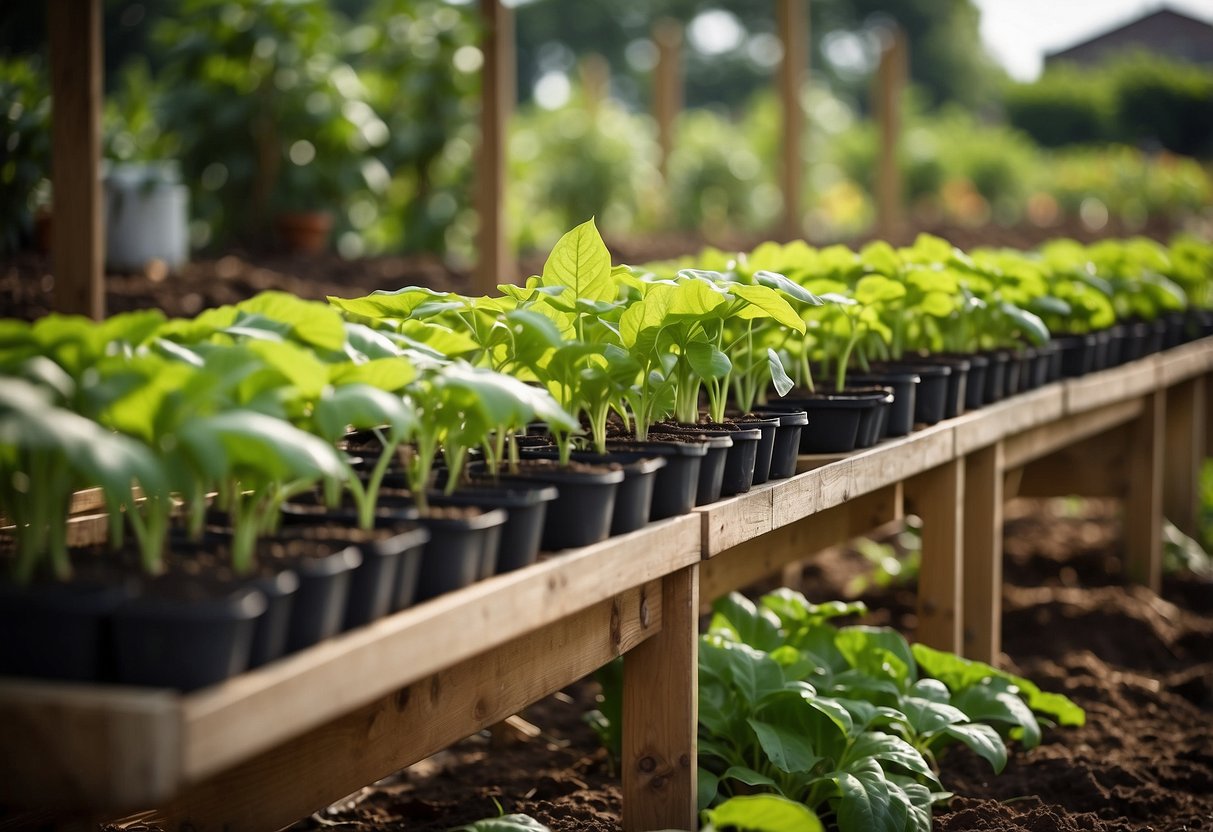
Creating a successful ampalaya garden involves careful planning, from choosing the right location to preparing the soil. Here’s a breakdown of how you can get started.
Choosing the Right Location
Selecting the perfect spot for your ampalaya garden is crucial. Ampalaya plants thrive in areas with full sunlight. Ideally, this means a location that gets at least 6 to 8 hours of direct sunlight every day.
Find a spot in your garden that has good air circulation. This helps in reducing plant diseases and aids in the growth of healthy plants.
Ensure the area you choose is away from large trees or structures that can cast shade on your ampalaya plants. Shade can inhibit their growth and production.
Soil Preparation
Start by ensuring your soil is nutrient-rich. Ampalaya plants need fertile soil to grow well. Adding compost or well-rotted manure can enhance soil fertility.
The ideal pH level for ampalaya is between 5.5 and 6.5. Test your soil and adjust the pH as necessary by adding lime to raise it or sulfur to lower it.
Good drainage is essential. Ampalaya plants do not like waterlogged soil. If your soil doesn’t drain well, consider creating raised beds or mixing in sand to improve it.
Prepare the soil by tilling it to a depth of about 12 inches. This allows the roots to penetrate deeply, ensuring a strong foundation for your plants.
Maintaining Your Ampalaya Garden
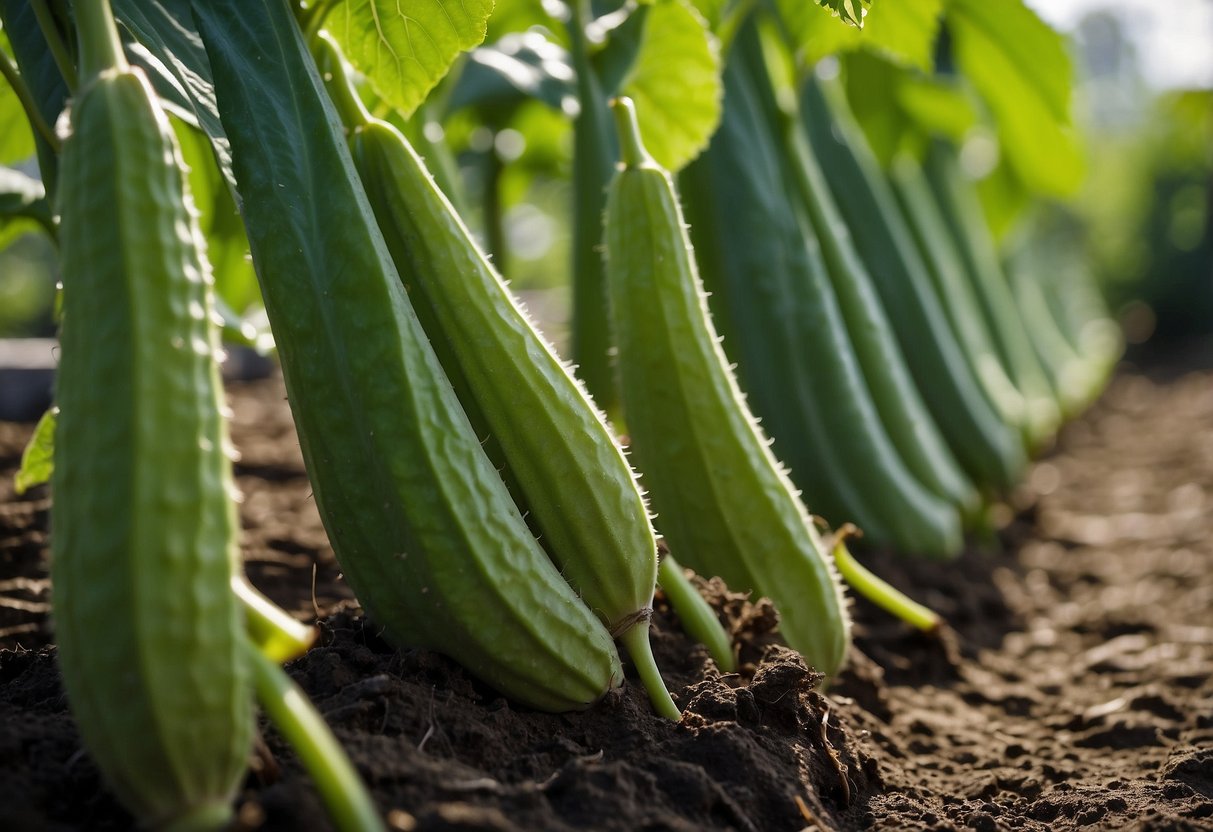
Proper maintenance of your ampalaya garden ensures healthy growth and a bountiful harvest. Focus on watering schedules and handling pests and diseases to keep your plants thriving.
Watering Guidelines
Ampalaya plants need consistent moisture. Water your ampalaya deeply once or twice a week, depending on rainfall. The soil should stay moist but not soggy. Use mulch to retain moisture and keep the soil temperature stable.
- Morning watering: Water your plants early in the day. This practice reduces the chance of fungal infections.
- Check soil moisture: Stick your finger in the soil up to your second knuckle. If it feels dry, it’s time to water.
- Avoid over-watering: Waterlogged roots can lead to rot. Ensure your garden has good drainage.
Pest and Disease Management
Ampalaya plants can suffer from pests and diseases. Stay vigilant and take quick action to protect your garden.
- Common pests: Look out for aphids, fruit flies, and caterpillars. Use insecticidal soap or neem oil to manage infestations.
- Diseases: Watch for powdery mildew and root rot. Ensure good air circulation and avoid overhead watering to prevent these issues.
- Handpicking: Remove visible pests by hand and dispose of them. This method works well for larger pests like caterpillars.
- Companion planting: Grow basil or marigolds near your ampalaya plants. These plants can repel pests naturally.
Overall, maintaining your ampalaya garden through proper watering and pest management will help you get the best yield from your efforts.







